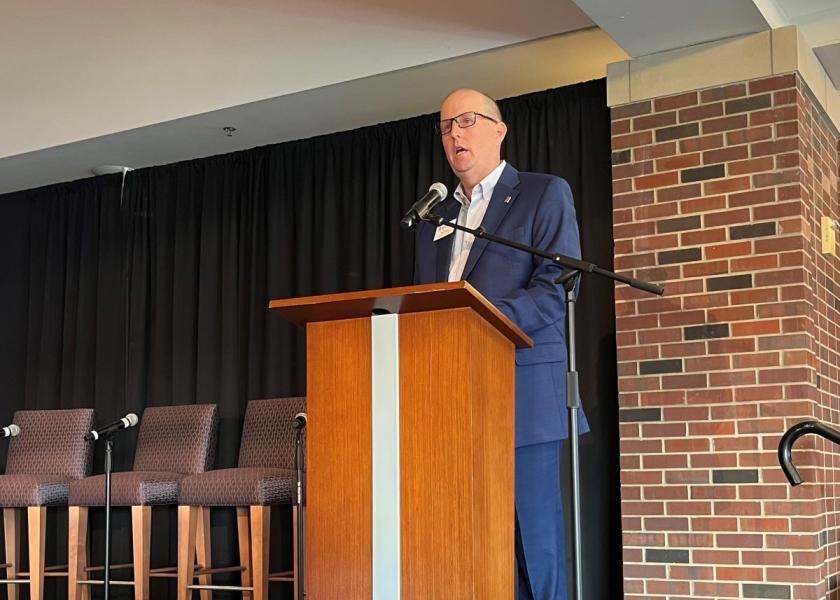Why We Need to Reinvent Veterinary Care Now

What does veterinary care look like in the 21st Century? That question drove hours of conversation during the 21st Century Animal Health Symposium at the University of Illinois in Urbana, Ill.
A group of more than 125 veterinarians, animal health industry leaders and academia gathered to discuss the future of the veterinary profession on Oct. 27.
“I think our challenge is to reinvent how we deliver veterinary care. And care is about people, too. It’s about the receiver of care and the giver of care,” explained Jim Lowe, DVM, associate dean of Online Programs and Extension at the University of Illinois College of Veterinary Medicine.
Labor productivity is often a measure of economic success, he said.
“Veterinary productivity (care per vet hour) has not advanced at the same rate as the demand for care, which has led to overworked, frustrated veterinarians,” Lowe said.
Until the productivity gap is solved, he believes the industry will continue to see challenges around employee dissatisfaction and burnout.
“We have young vets being paid a tremendous amount of money when they graduate and they are still not satisfied,” he said. “We have to change some fundamental things around this.”
The Paradox
Adoption of medical technologies has resulted in better patient care creating more work, leading to increased professional dissatisfaction.
“Technologies have improved quality of care, but they often increase the workload required to manage each case,” Lowe said. “It’s much better for the patient, but we are killing the person delivering the care.”
That’s why a group of thought leaders are coming together to develop the Center for Veterinary Innovation.
“Meat production systems must continue to improve quality of animal care consistent with consumer expectations,” said Bradley Wolter, president of Windy Hill Meadows, LLC, and conference attendee. “The veterinary profession must take a leadership role in that objective as experts on the system. A center that creates an environment for supporting the profession with the capability of today’s technology will catalyze that role into becoming impactful.”
Lowe hopes the center can increase access to veterinary care and promote the sustainability of the veterinary profession by increasing the amount of care a veterinarian can provide while reducing the effort to provide that care.
“We have to figure out how do we – in this commodity market – create value for the animal owners and veterinarians,” he said. “I’m terrified we won’t have veterinarians in certain parts of the country in the future because no one wants to move there. How can we provide better access to care?”
Here’s the Ask
The model Lowe proposes will bring university, profession and industry together to solve problems.
“We think the University of Illinois can be a resource for the state with integration of technology, technology improvement, primary development, communication and education, combined with profession leaders to help articulate needs and share how they use new technology and industry to provide ideas, solutions and commercialization,” Lowe said.
They plan to build a new facility within the Round Barn Complex on the U of I campus to foster collaboration, creative thinking, problem solving and education to house the Center for Veterinary Innovation.
“We are putting a facility back in a spot that really started because of Extension,” he added.
So, what is the ask? Lowe is looking for people to join their journey to reinvigorate land-grant roots to address 21st century problems to improve how the veterinary industry delivers care, improves the sustainability of the profession and ultimately, the wellbeing of the animals.
Micah Jansen, DVM, Managing, Pork Technical Services Veterinarian at Zoetis, attended the conference and said it challenged her to think more deeply about how the industry can challenge itself to embrace technology to drive change in veterinary care.
“It’s not only about improving the actual care being delivered,” Jansen said. “It’s looking out for those veterinarians delivering the care so that they are engaged in their role.”







